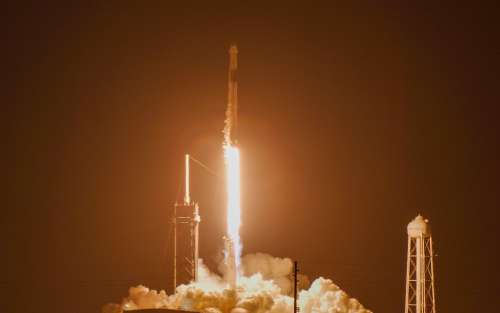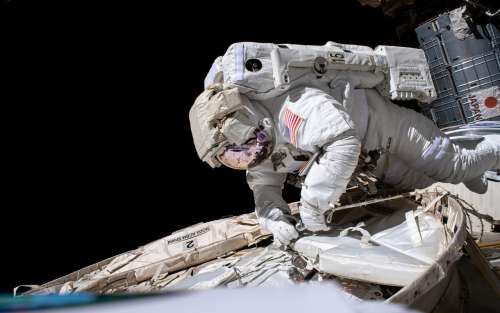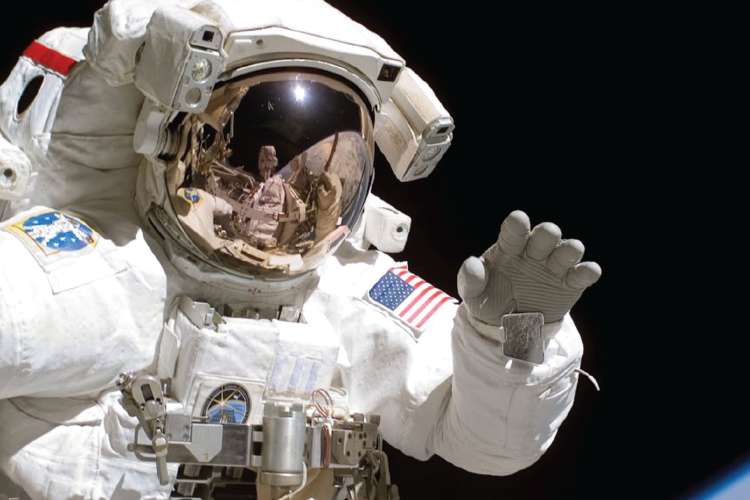As the pace of space activities—from launches to reentries—and commercial innovation continue to accelerate, the U.S. government will be assessing how to evolve its current safety oversight of commercial human spaceflight (cHSF) for crews and participants.

To avoid stifling innovation in the nascent commercial human spaceflight industry with regulation, Congress instated a learning period in December 2004 within the Commercial Space Launch Amendments Act. Since that law was passed, the Federal Aviation Administration (FAA) has licensed SpaceX, Virgin Galactic, and Blue Origin to perform commercial human spaceflight missions for orbital and suborbital flights, however, without safety regulations for the participants.
With the learning period slated to expire in October 2023 after several extensions, anticipation has heightened across the space enterprise on what the future of cHSF will look like. To support the FAA's Office of Commercial Space Transportation (AST) in drafting its Congressional Report, The Aerospace Corporation applied its technical expertise in researching, analyzing, and making recommendations on a commercial human spaceflight safety framework. The recommended safety framework principles are guiding the government as it considers next steps for advancing the safety of commercial human spaceflight.
“There’s an industry desire to move quickly, but safety cannot be overstated — at the end of the day, we all want access to space for all participants to be safe and sustainable,” said Danielle Bernstein, Principal Director of Federal and Commercial Programs. “Aerospace’s support to the U.S. government is important in getting it right and ensuring that the space industry continues to move space innovation forward safely. Our experts worked side-by-side with the FAA, and their efforts are ensuring decisionmakers have the latest scientific expertise available to evaluate the commercial space industry in a holistic manner.”
A History of Advancing Space Safety Efforts
The cHSF safety framework is a result of Aerospace’s long history of supporting the space enterprise and knowledge in the space safety field through its own initiatives, like the Space Safety Institute. Other spaceflight related work with Civil customers includes working with the NOAA Office of Space Commerce to develop a cloud-based prototype system to enhance knowledge and capabilities for space situational awareness. Initially introduced in 2022, this prototype provided a reference architecture for an operational system, which will be commercially procured by NOAA, known as the Traffic Coordination System for Space, or TraCSS.
“We know a lot about space, and our expertise has derived from our experience supporting our Civil and National Security customers in various ways,” said Bernstein. “Because of our work in mission assurance and expertise in systems engineering, we understand very deeply every aspect of what it takes to be successful in all facets of space operations, and we are taking that awareness and applying it to cHSF safety in support of our Civil customers as they evolve their safety practices and systems.”
The FAA engaged Aerospace after Congress requested the cHSF report. Experts from across Aerospace’s broad technical backplane convened to analyze case studies of other industrial sectors, including commercial aviation, autonomous vehicles, cruise ships, and others.

Through these comparisons, the team identified best safety practices and shared traits. Specifically, the team found three common core components among these safety frameworks, the first being humans themselves.
“Across the different space launch technologies, people are the fundamental, common factor. While people make mistakes, they are also your boots on the ground,” said Dr. Josef Koller, co-founder with Bernstein of the Aerospace Space Safety Institute and co-author of the cHSF report. “If you use that as your core thesis, the focus becomes how we can enable people to make the environment safer.”
The other two common core components found in safety frameworks across many sectors with safety as a primary concern: establishing a positive and just safety culture, and regularly gathering data to be predictive. Studying spaceflight events and collecting analytics, whether quantitative or qualitative, can proactively help mitigate potential issues and improve current procedures or tactics, while failing to collect data would be tantamount to waiting for accidents to happen.
“The key ingredients of the safety framework, like safety culture, best practices, and data collection, are all aspects that regulators can work on today to start transitioning the commercial human spaceflight industry beyond the learning period,” said Koller, who recently testified before Congress to provide his expertise on the topic of Continuing U.S. Leadership in Commercial Space at Home and Abroad. “Developing technically informed best practices and regulation can also lead the way to conversations on an international scale. Those dialogues will be necessary for human spaceflight because it will soon cross terrestrial borders and involve multiple nations, so it’s better to get started on these efforts now.”
A Foundation for the Future of Spaceflight
The Aerospace team delivered a comprehensive report, including a roadmap for implementation and recommendations with several components that the FAA can initiate. Although the learning period is possibly nearing its end date, Aerospace’s report will help frame the future of commercial human spaceflight as activities regarding safety continue.
“The FAA is the regulatory authority for commercial launch and reentry, so any U.S. commercial company that wants to perform a launch or reentry from anywhere in the world, or any non-U.S. corporation that wants to launch from U.S. soil, needs to obtain a license from the FAA,” said Catrina Melograna, Project Engineer at Aerospace. “There are a lot of analyses involved. It’s very technical but very important for safety. This is where we’re supporting the FAA with the cHSF framework: to advance it from the current focus on safety to the general public to also include safety of human participants. It’s to ensure the safety of these operations, which helps these companies get the licenses needed to launch and continue to advance commercial capability.”

As the operator of a Federally Funded Research and Development Center (FFRDC) focused on the space enterprise, Aerospace has a unique role in how it delivers support to the government.
“Our goal is to build that direct institutional relationship and trusted partnership with our Civil customers and commercial providers that enables a more interactive approach to problem-solving, which is more efficient and technically effective,” said Patrick Bauer, Systems Director of Civil Aerospace Programs at Aerospace. “For commercial launch providers, failure has been acceptable because it’s been part of the process. You can learn a lot from failures. Obviously, once you add a human to the equation, failure is no longer an option. So, this is a progression where we’re helping to find a balance between moving fast and ensuring human safety.”
The cHSF framework report is a milestone in understanding the major themes and shared qualities present in other effective safety frameworks, in turn helping the U.S. space enterprise build a safer and more innovative space environment for the future.
“Right now, there are a lot of changes and growth in commercial space,” said Bernstein. “It’s a great place to be, and we are staying abreast of all the innovations. For Aerospace, it’s about providing our space expertise in a really impactful way, ensuring commercial human spaceflight can be safe and safely integrated into the comprehensive set of activities in the growing space ecosystem.”







